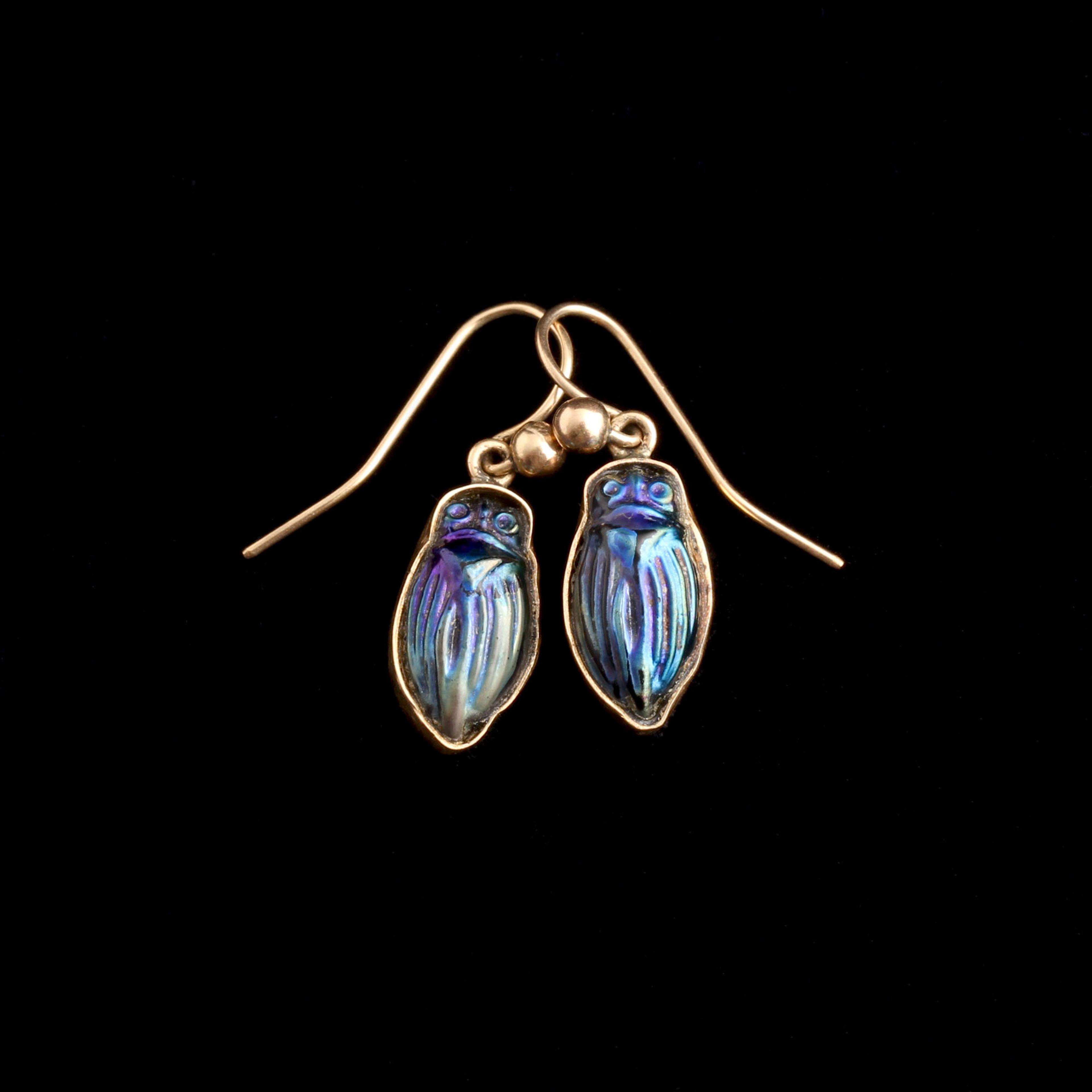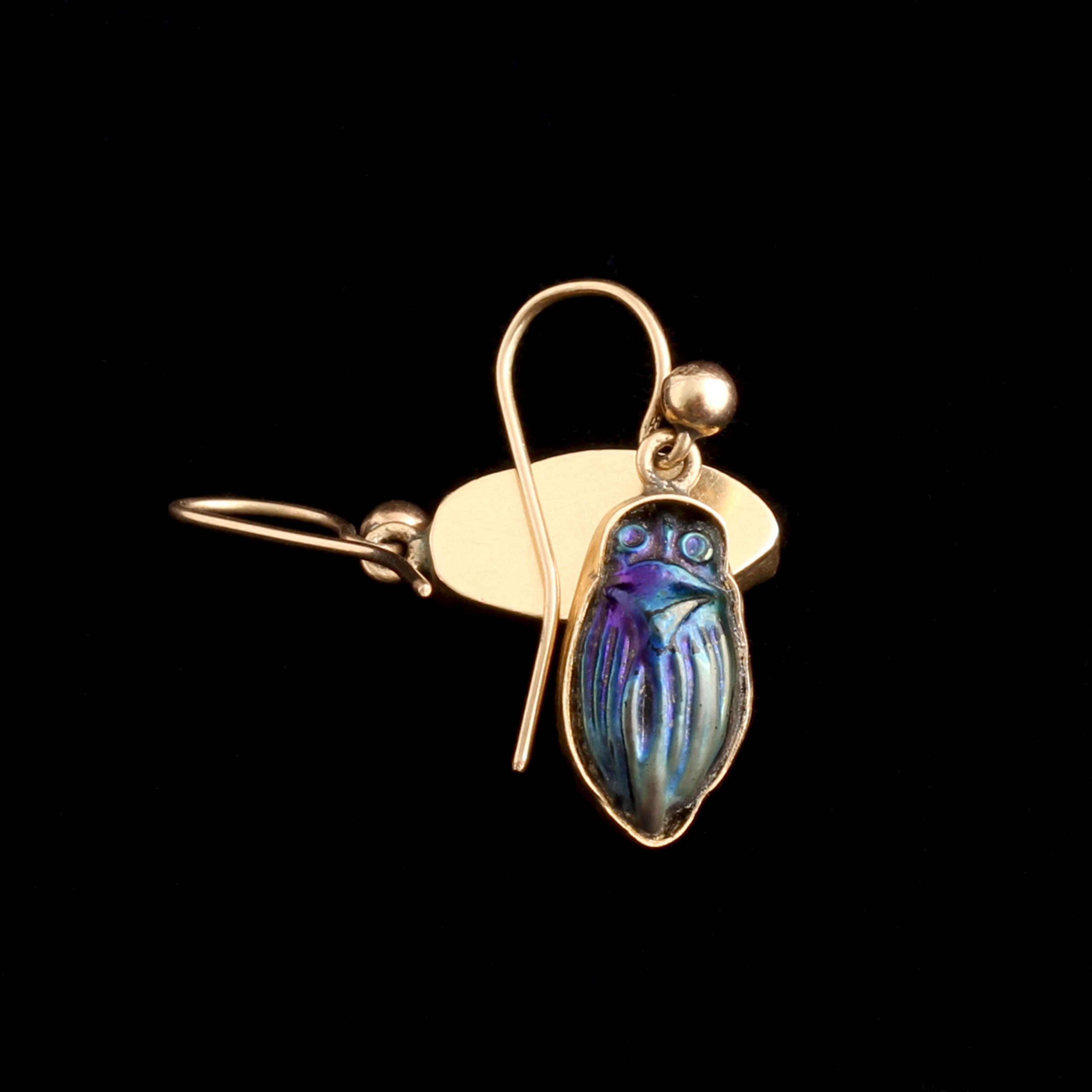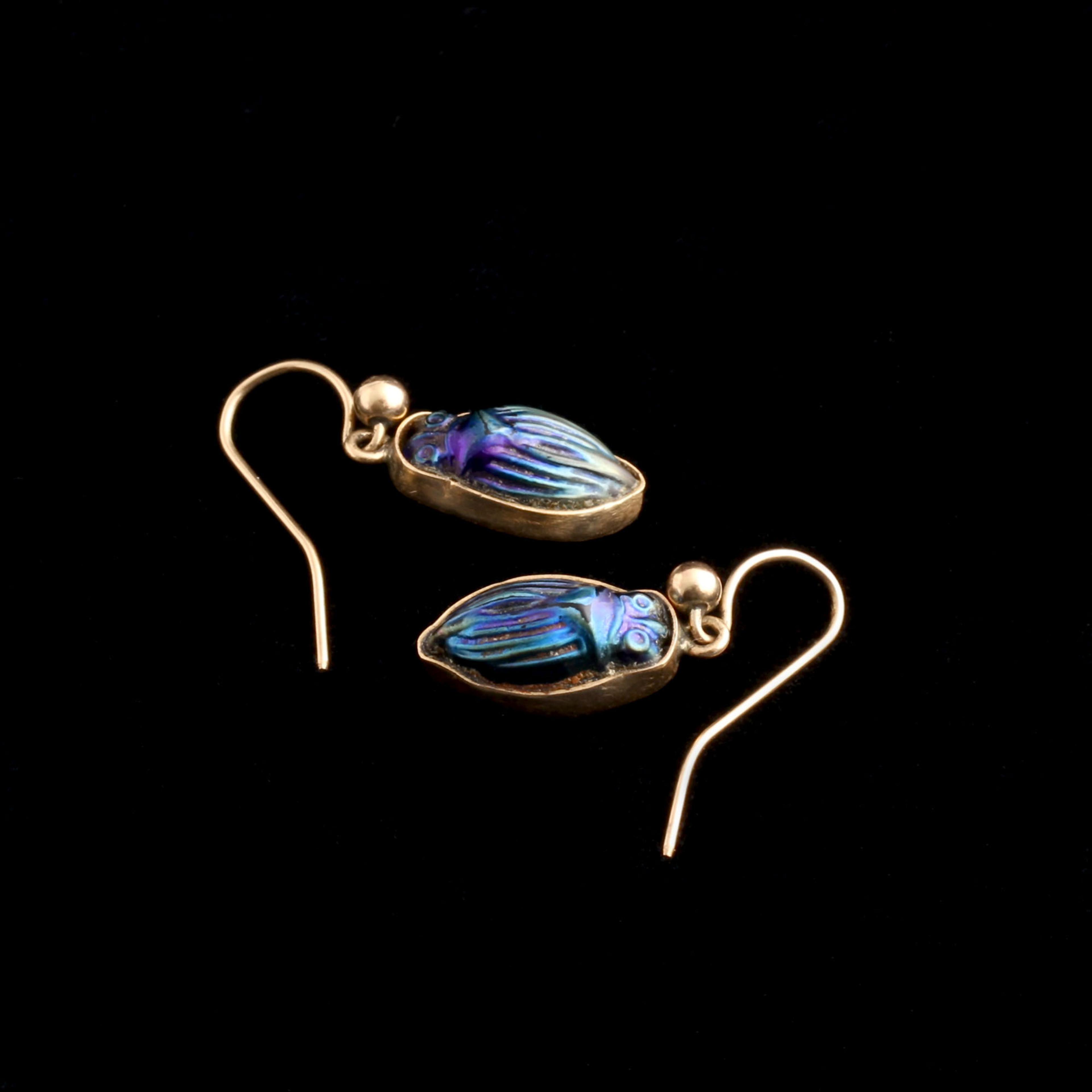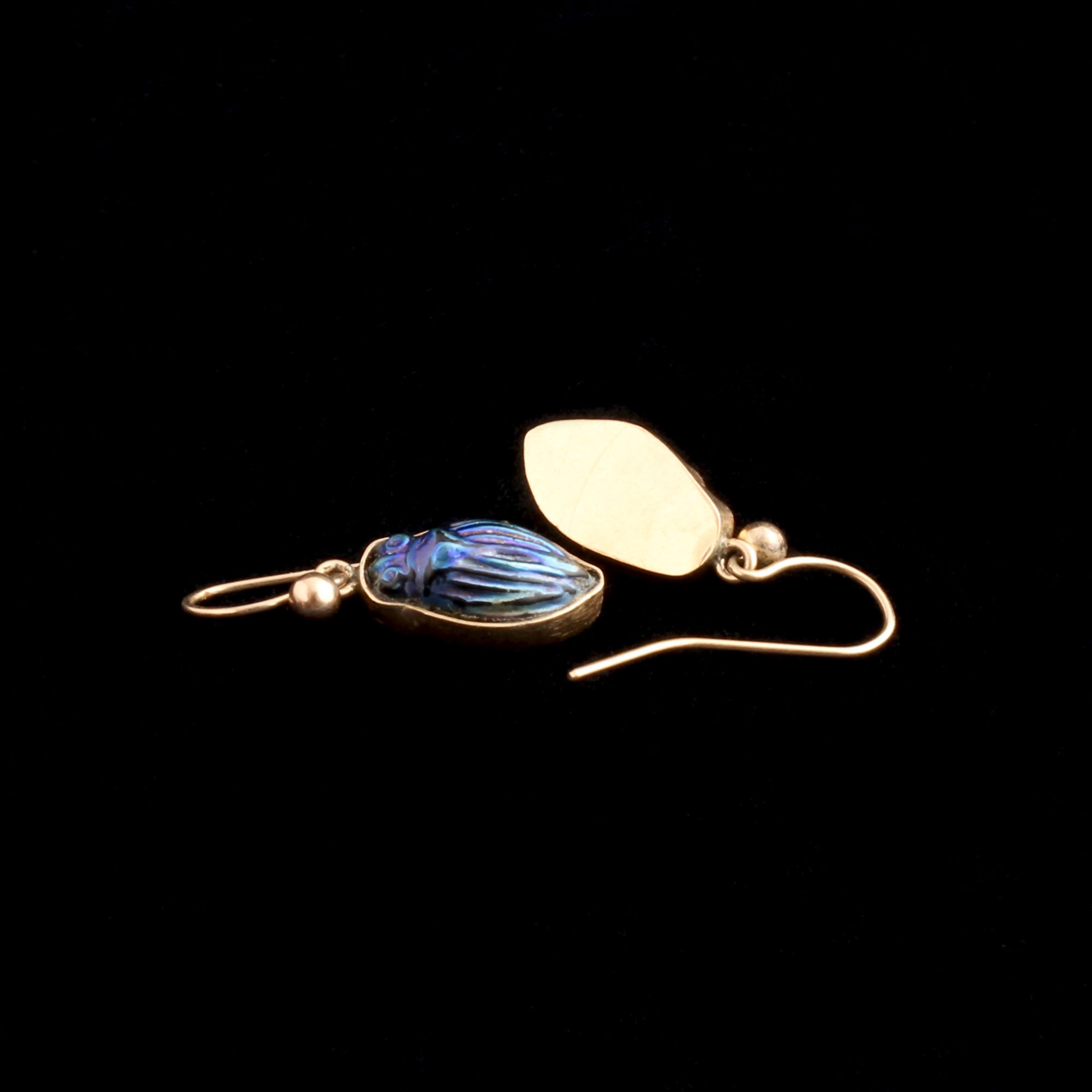In the Art Nouveau period, lots of artists were producing Egyptian Revival scarab-style beetles. In the 1890s, the glass master Louis Comfort Tiffany developed an iridescent glass he called "Favrile" in his shop in Corona, New York. These little bugs look a lot like the ones Tiffany made, but the "Tiffany" maker's mark doesn't appear on the backs. It's possible these were taken from a larger, more beetle-filled piece of Tiffany jewelry, and that's why there's no mark. More likely, though, they were knockoffs made by a jealous competitor. The quality of the iridescent pressed glass is gorgeous.
thedetails
- Materials
14k gold (tests), glass
- Age
c. 1920
- Condition
Very good
- Size
15/16" length measured from the top of the ear wire, 1/4" width
Need more photos?
Send us an email to request photos of this piece on a model.
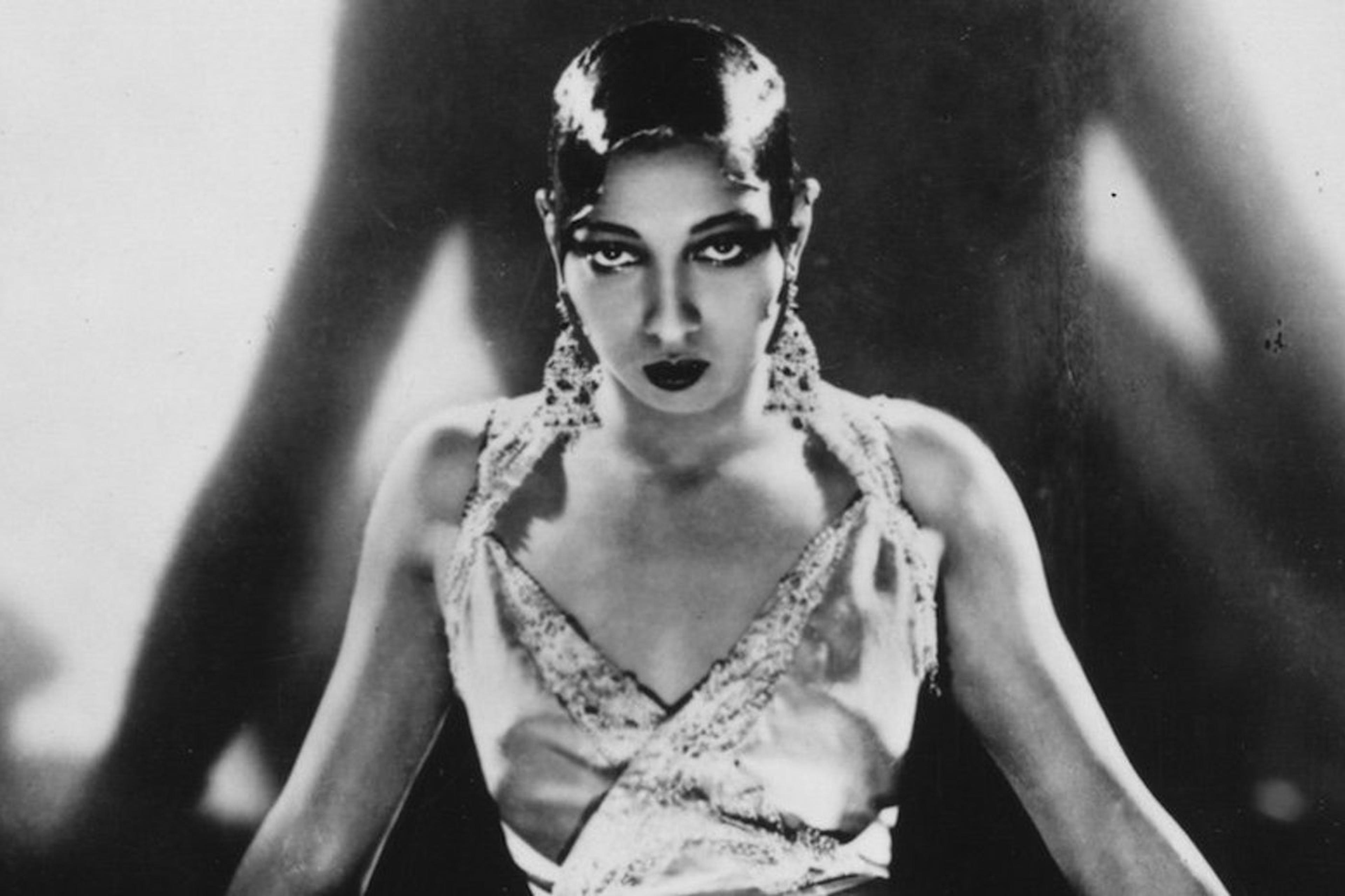
Aboutthe
Art DecoEra
1915 — 1940
Motifs like ziggurats and sunbursts, stripped of visual clutter, conveyed the optimism of an increasingly technological world. In jewelry, the predominant use of white metals let colorful gems take center stage. Stones that were opaque and true in color, like lapis lazuli, onyx, jade, coral, and opal were worked into designs alongside more precious and brilliant gems, like diamonds, sapphires, rubies, and emeralds. Extra-long beaded necklaces and tasseled “sautoirs” followed the narrow flapper silhouette. The baguette cut was an Art Deco innovation, and the decade saw increased use of other angular diamond cuts, like the precise calibré cut and the emerald cut. Synthetic colored gems, specifically ruby and sapphire, were celebrated as a scientific marvel. Marcel Tolkowsky, 21 years old at the time, published the design for the round brilliant cut in 1919.
please note:Terms of Sale
Antiques can be returned unworn and in original condition within 10 days of delivery for an exchange or refund minus the cost of shipping. Once a piece has been altered, including ring re-sizing, it is FINAL SALE.
